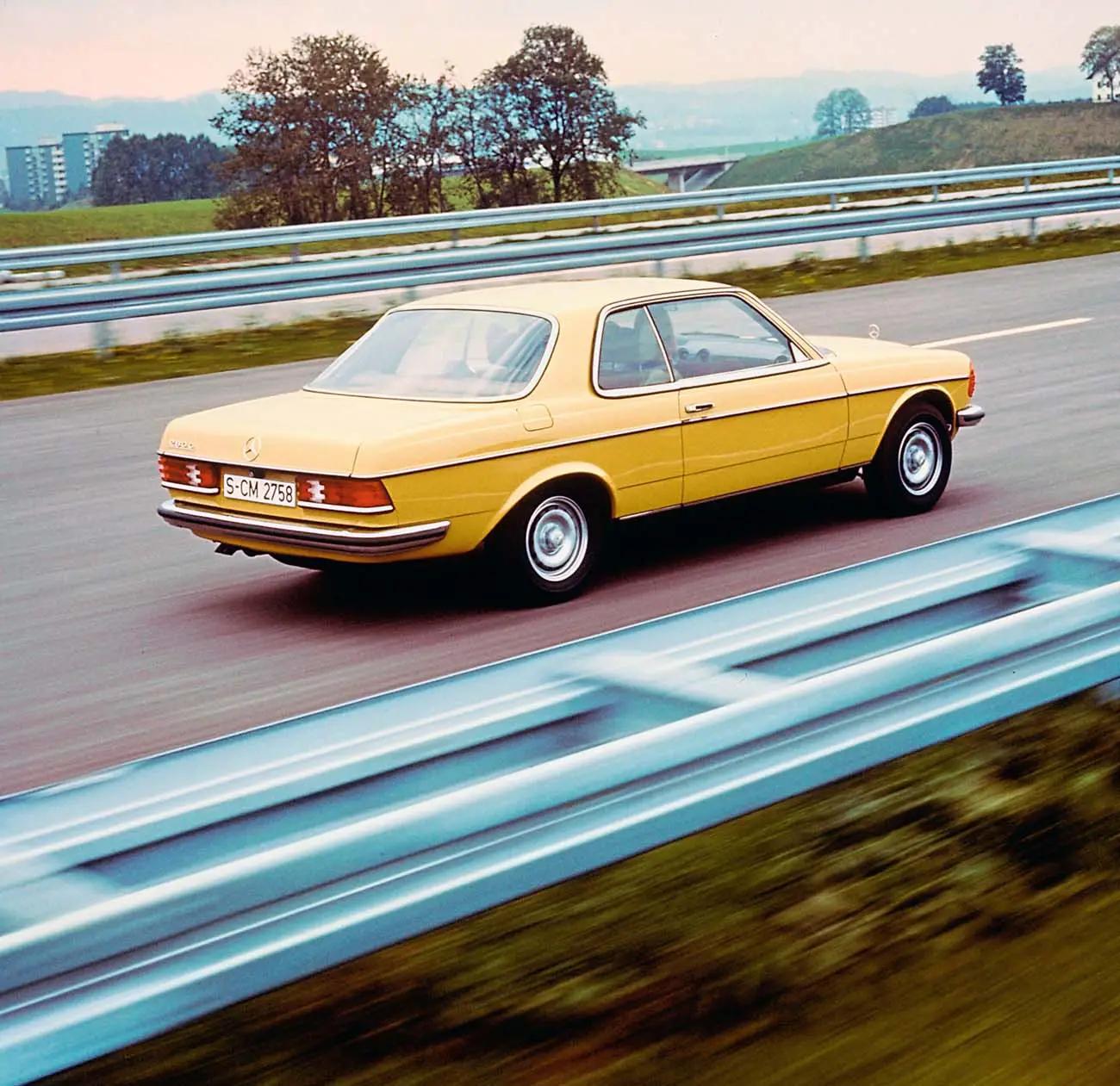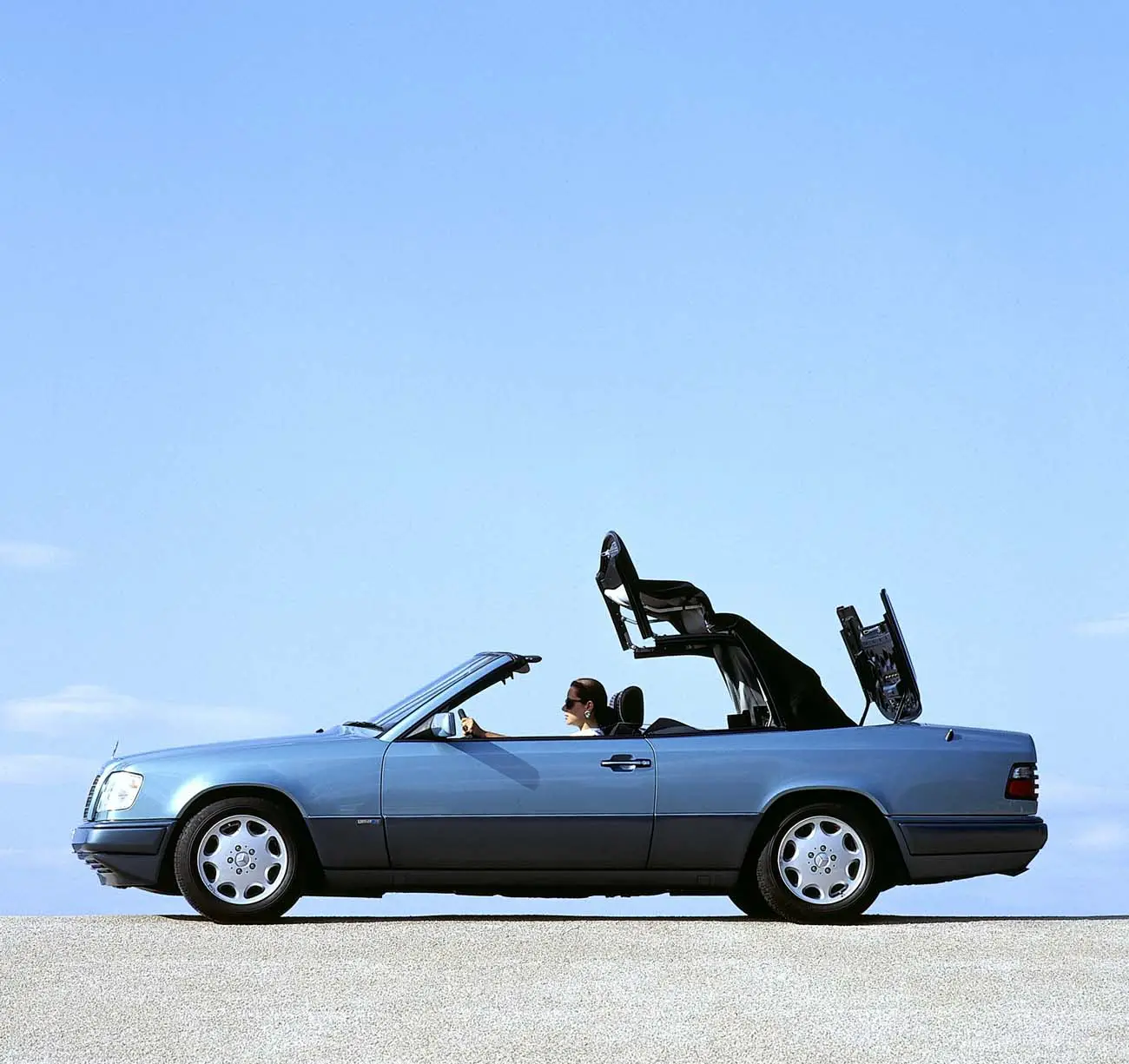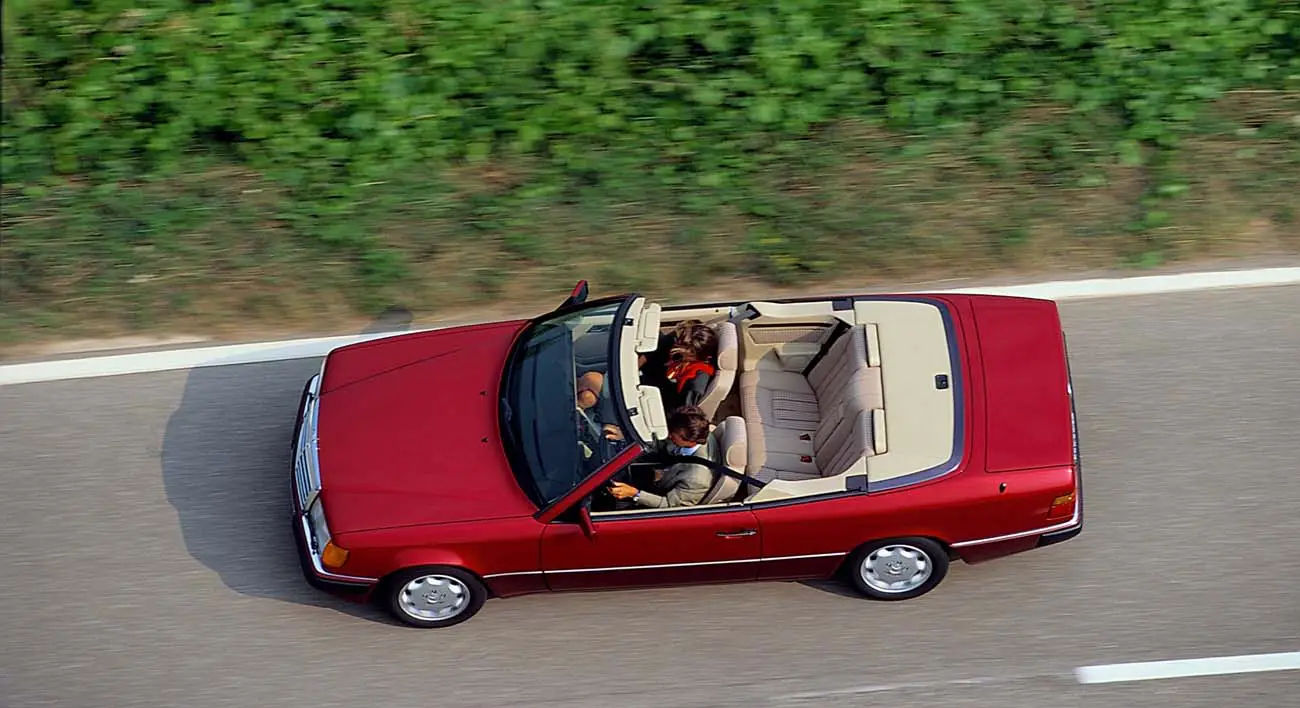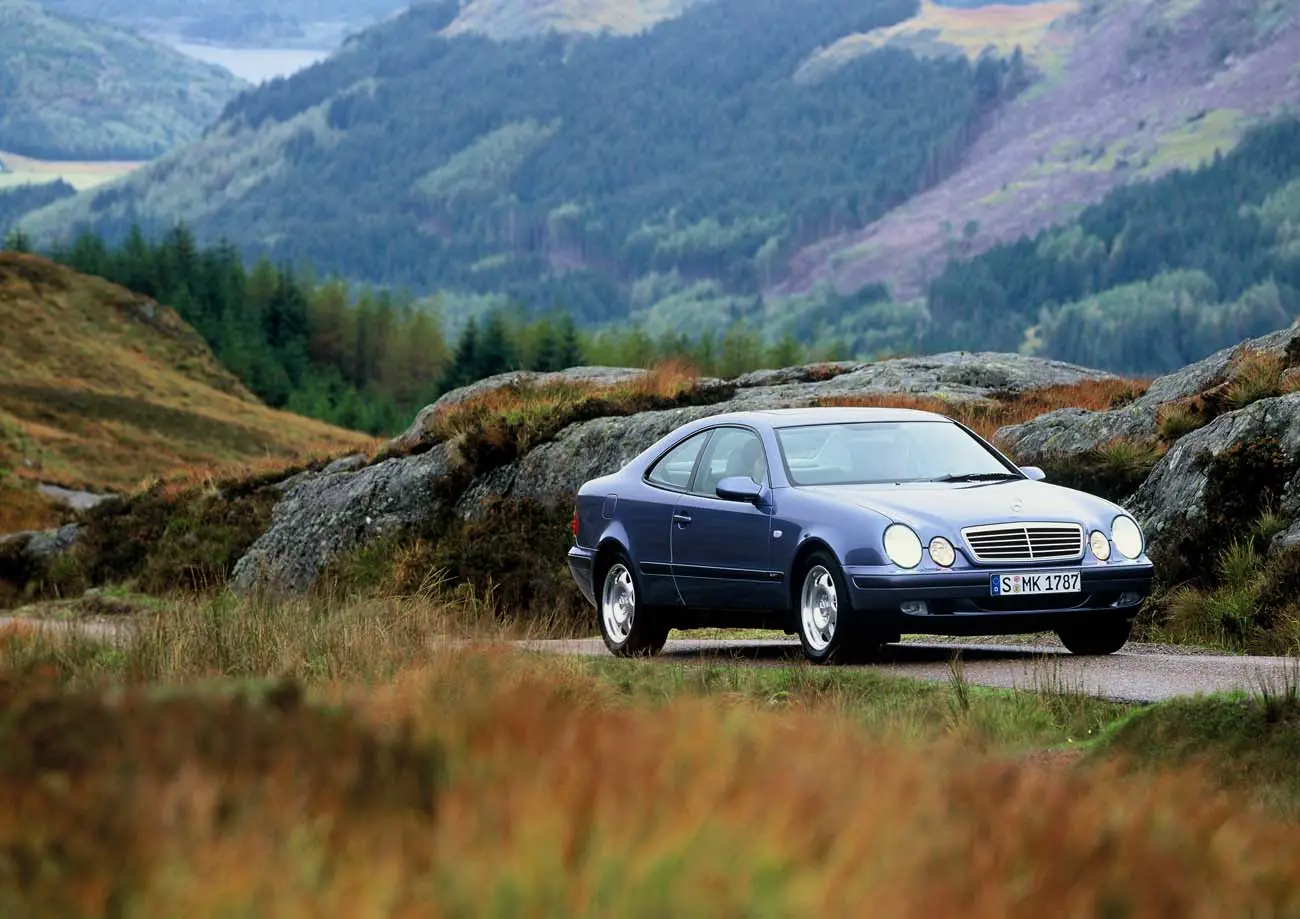
An Elegant History Of The Mercedes-Benz E Class Coupe & Cabriolet
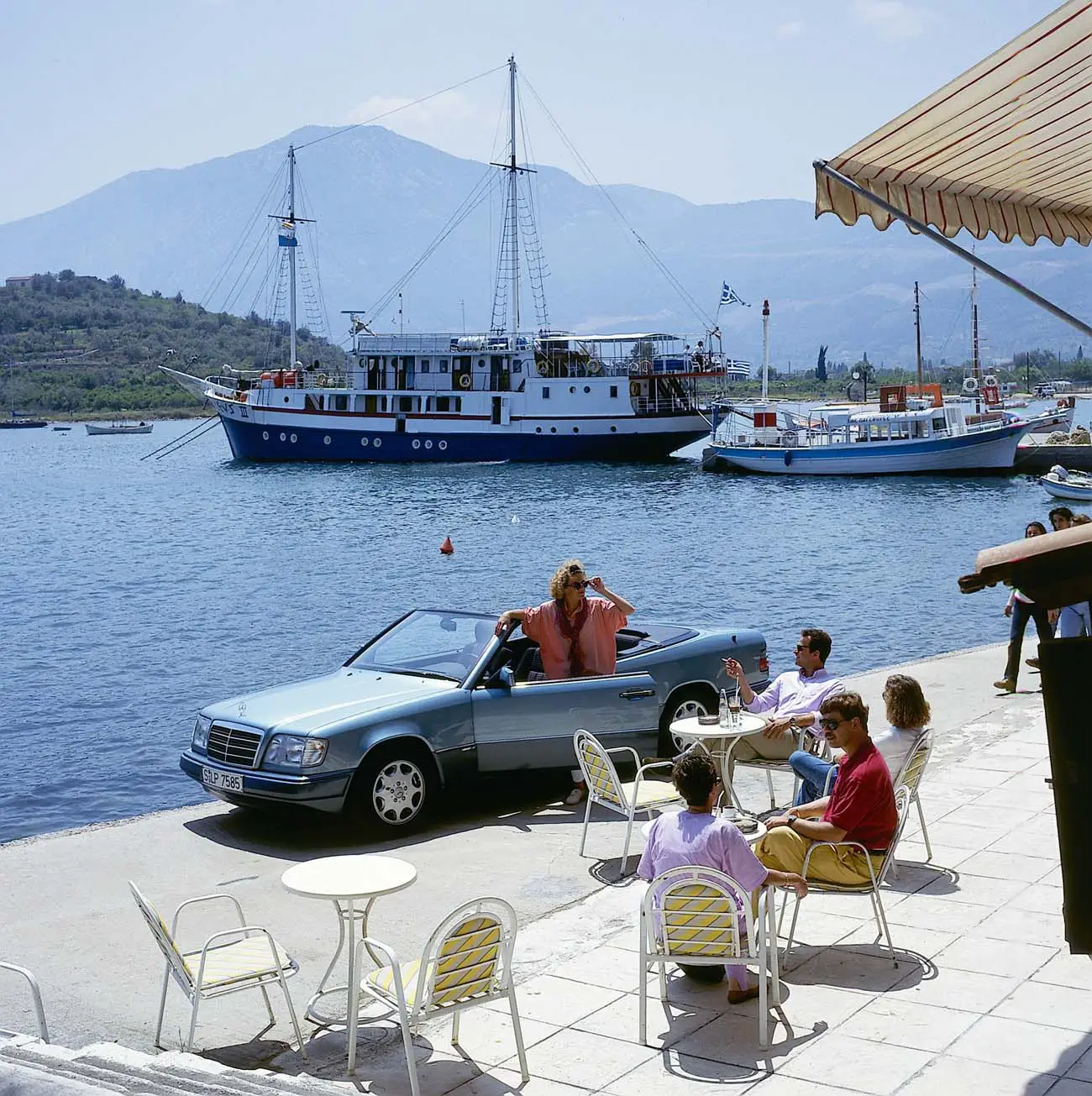
Mercedes-Benz have been making some sort of E Class coupe since 1968. It has become a traditional line since the W114 Stroke/8. The first cabriolet for the market segment was in 1991 for the W124 series. (If you want to read more about the E Class you can read about it in this article here.)
All earlier convertible cars had been shared bodies with the upper mid-sized segment to essentially evolve into the S Class. But since the introduction with the W124, the cabriolet has been a good seller globally.
The W114 Stroke/8, The First E Class Coupe
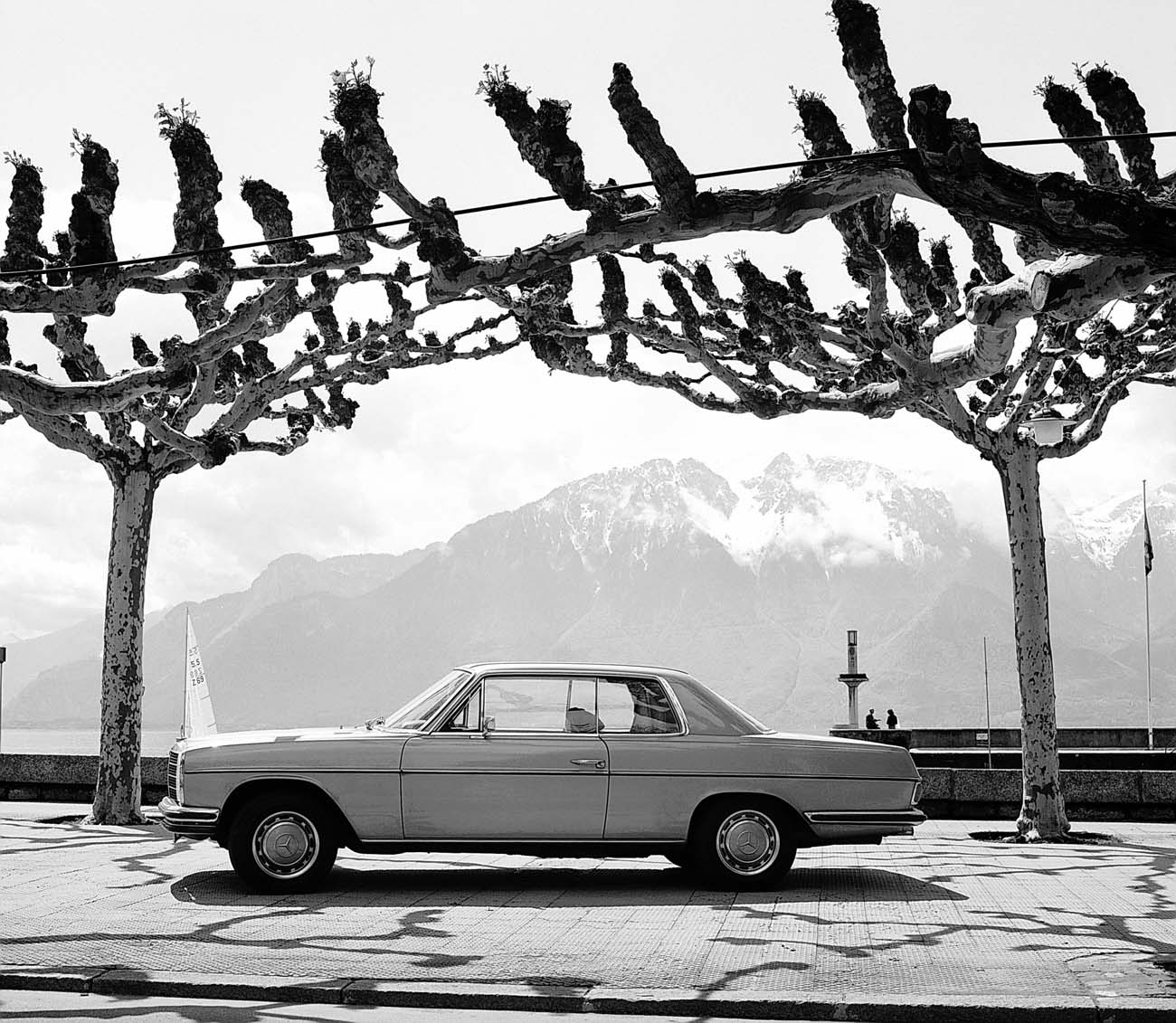
It was back in November 1968 that Mercedes introduced its two door variant of the W114 saloon. Complete with more steeply raked screens front and rear and a 45mm lower roofline, the new car made quite the elegant silhouette.
All two door variants were available with six-cylinder engines only and were represented as the top of the Stroke/8 range. The M114 engine in the 250 CE came complete with Bosch D-Jectonic fuel injection. With 150 hp the car was tested to 199 km/h by Swiss magazine Automobil Reveue. Very nearly the magic 200 km/h figure. Still, this was a highly impressive figure for a car of this time. Mercedes decided to use the Hockenheim ring race track to present its new coupe.
Additional refinements inside, beyond that of the saloon. Fine wooden veneers in the instrument panel for example and high quality carpeting. The pillarless design gave an impression of space inside with frameless windows that fully retracted front and rear.
Later in 1972 the 280 CE was introduced and brought levels of performance even higher. The 185 hp engine enabled the 200 km/h target to be met.
By the time the Stroke/8 Coupe finished production in August 1976, Mercedes-Benz had built in excess of 67,000 examples. Some 60 percent of these were exported around the world.
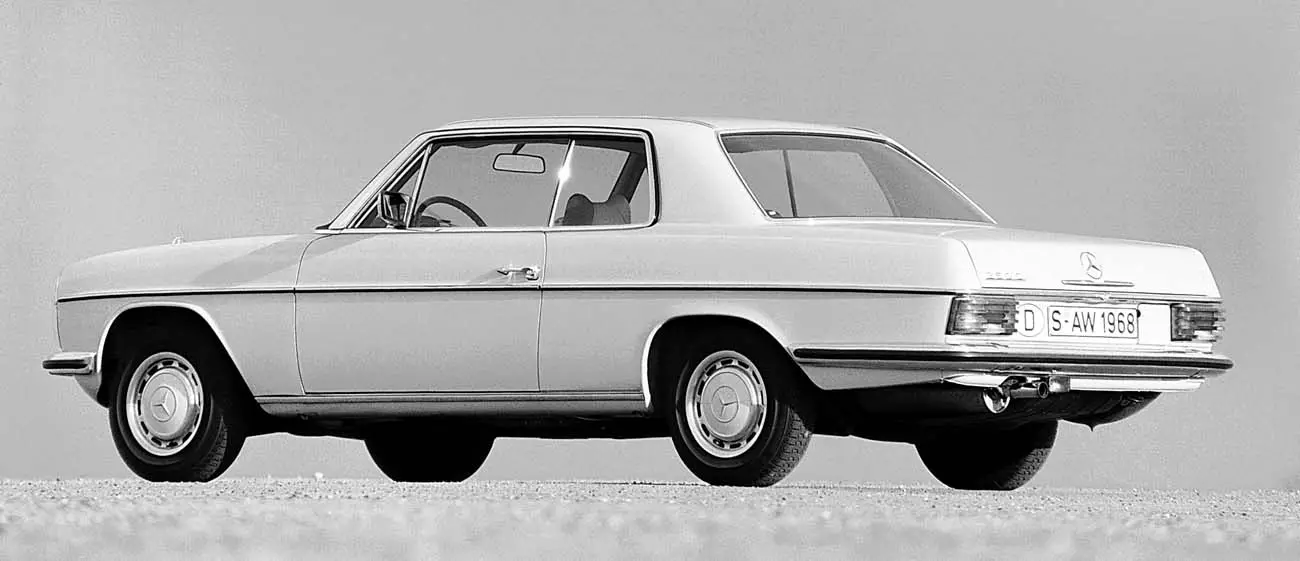
Mercedes-Benz C123, Further Refinement And Introducing Four-Cylinder Power
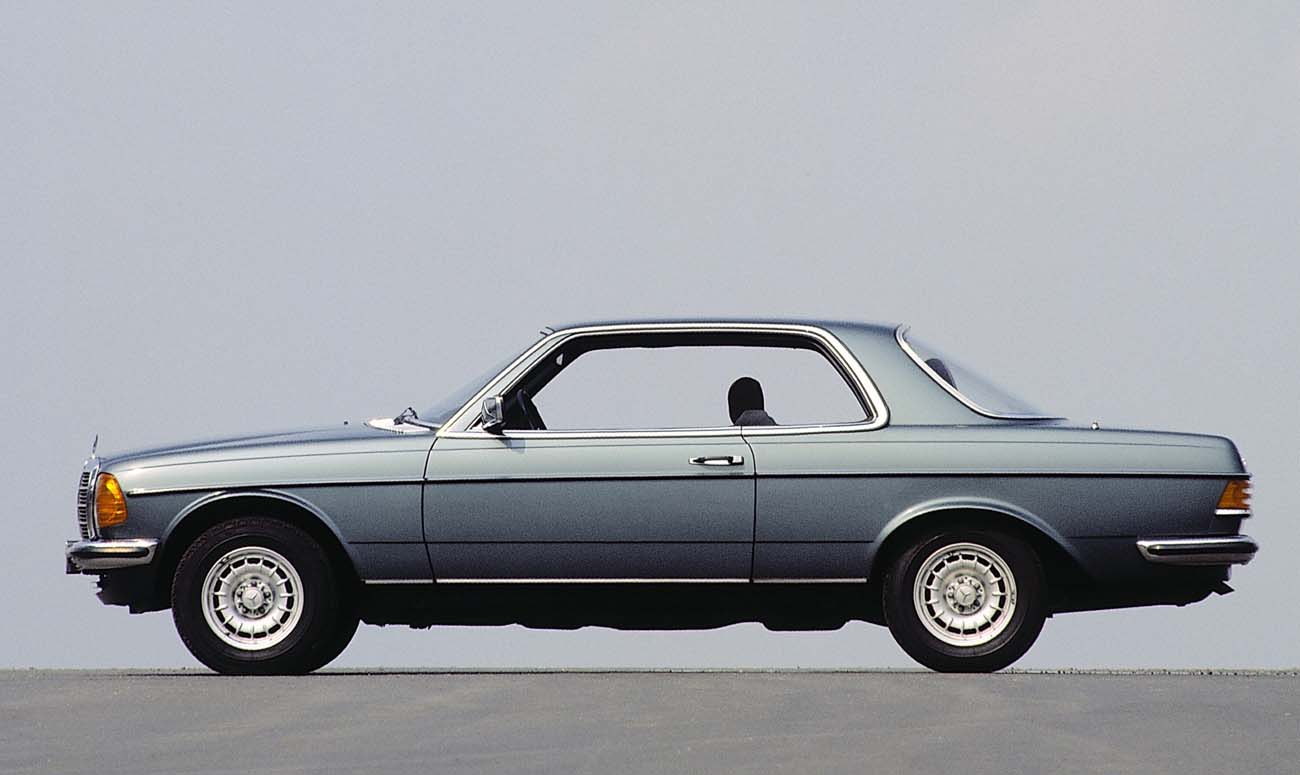
After the success of the Stroke/8 the next generation of E Class coupe was unveiled in March 1977, the C123 a little while after the W123 saloon in 1976. This time alongside the 280 C and 280 CE there was a 230 C and the first of the four-cylinder coupes.
The close relationship with the styling of the saloon was kept from before. A 40mm lower roofline and an 85mm shorter wheelbase giving the coupe its own distinct character from the saloon it was based on. The same steeper raked screens and pillarless design remained.
A benefit over the Stroke/8 was the stiffening up of the roof frame structure and the use of high strength roof pillars. The addition of reinforced doors making the C123 a safer car than before. All trim however was just as in the saloon.
The 230 C came with a 2307cc, 109 hp engine where the six-cylinder cars of 2525cc and 2746cc had 156 hp and 177 hp. Adding to this line up was a Diesel introduced in September 1977. The 300 CD was the five-cylinder unit introduced in the Stroke/8 producing 80 hp. Reserved only for the North American market it was replaced in 1981 by the 300 CD turbo Diesel with 125 hp. All carburettor engines finished production in 1980, the 230 CE gaining fuel injection and 136 hp.
The C123 lasted for 8 years in production and finished in August 1985, selling a total of 99,884 units. The rarest is the 280C of which only 3,704 were built. the most successful was the 280 CE with 32,138.
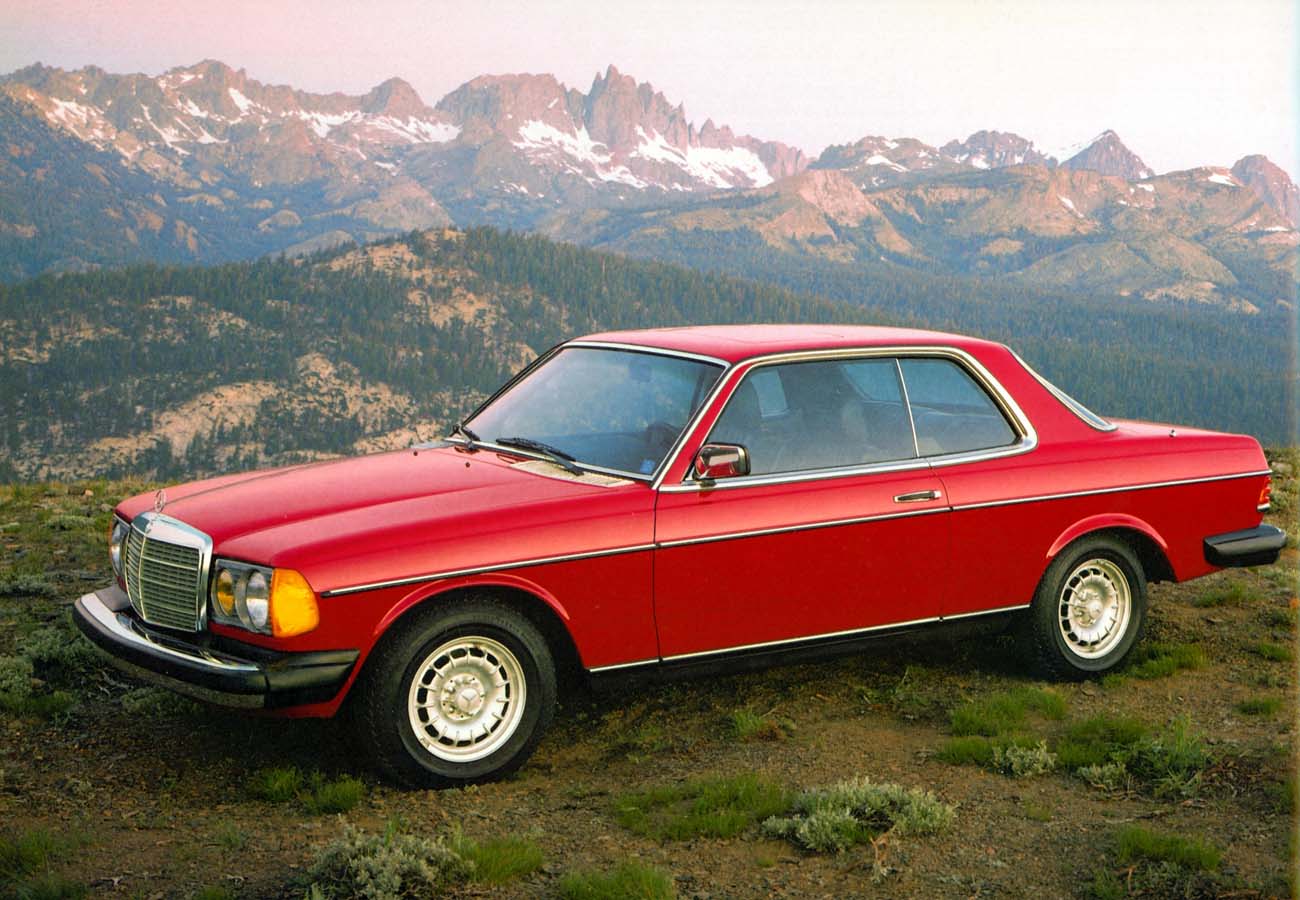
Merccedes-Benz W124, C124 and A124 - E Class Name, Both Coupe And Cabriolet
Mercedes-Benz launched the 124 series coupe at the Geneva Motor show in March 1987 after a few years without a two door in the upper mid-sized segment.
As before, the design was based on the four-door saloon. Again, the coupe was slightly shorter, the wheelbase shrinking by 85mm just like the 123 series. Only the front end of the saloon remained with the sides, roof and rear being slightly modified.
Being another pillarless design, Mercedes strengthened the A pillars to compensate and longitudinal members and doors with high strength panels.
The range initially comprised of the 230 CE with 132 hp and the 300 CE with 180 hp. In 1989 a significant redesign was to take place where the 300 CE-24 was introduced. A 3.0 four-valve engine from the 300 SL-24 R129 sports car was used to create the new top of the range model. Now with substantially more power at 220 hp. Light alloy wheels, electric windows, leather steering wheel and burr walnut wood trim.
The cabriolet was launched in 1991 as a full four-seater, the first of its type from Mercedes for 20 years. The car featured a retractable soft top weighing 43 kilogrammes and was made up of a 27-part linkage with 34 joints.
To make the bodyshell more rigid so the convertible was as comfortable and safe as the others around 1,000 components were completely redesigned. Structural components were made from thicker or high-strength steel. Additional reinforcement was added to areas subject to high stresses. The diagonal struts from the R 129 SL sports cars were fitted, but rather cleverly the use of vibration dampers. These were installed in the left suspension strut, the roof frame and the side boot recesses. They successfully reduced the body vibrations that can occur with roofless cars.
The overall aim was to make the car as safe as the coupe, saloon or estate in a head-on, rear or side collision. Also, to survive in a roll over, the A-pillars were strengthened and like the SL, an automatically deployed rollover bar was installed.
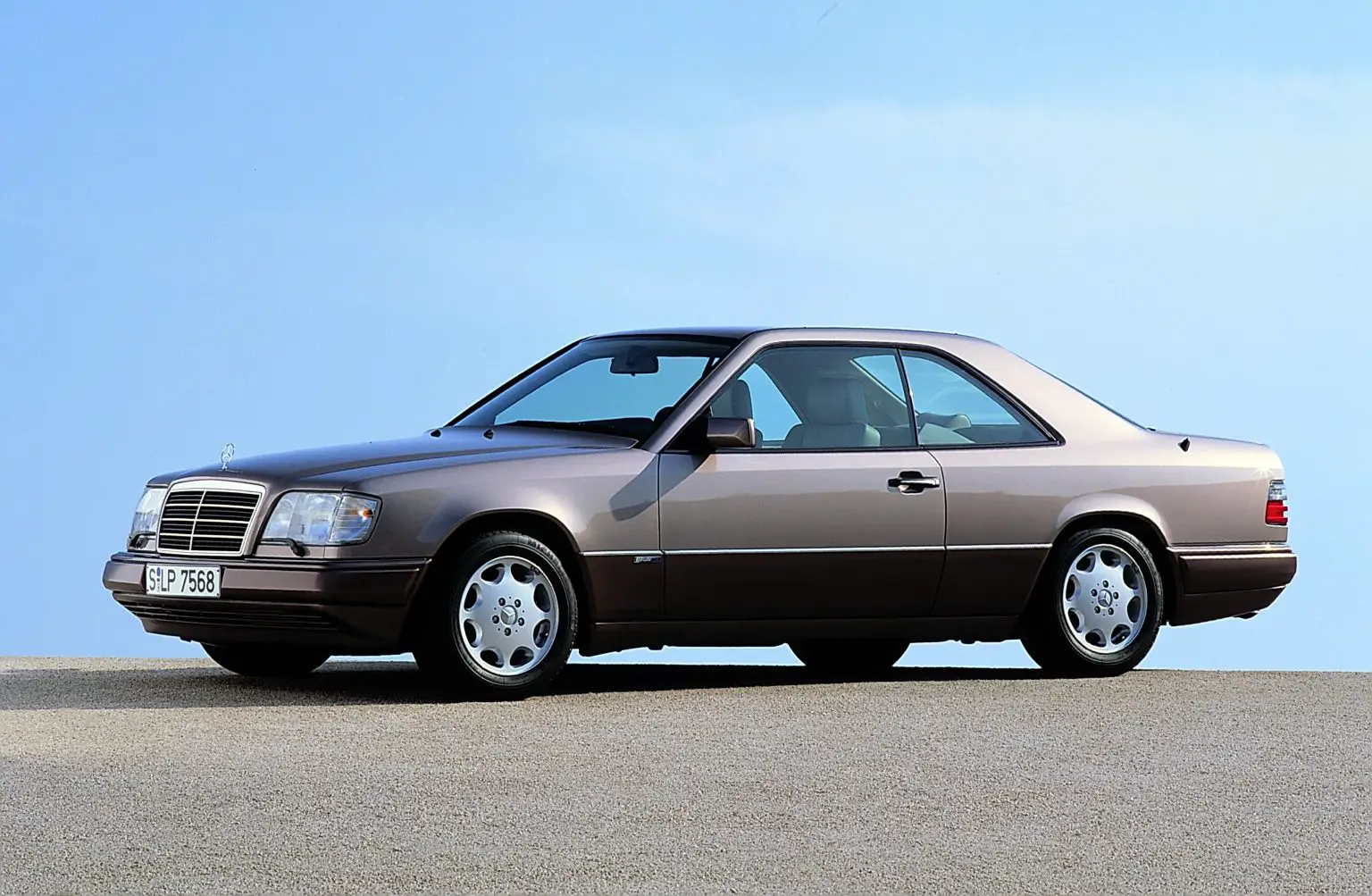
In June 1993, Mercedes-Benz unveiled the E Class coupe as a facelifted version of the 124 model series.
All 124 variants were now badged as E Class, both two door models being subtly redesigned. The most obvious feature was the restyled grille, similar to the one on the S Class where it was more integrated into the bonnet. Also, the three pointed star was now on the bonnet and not the grill itself. The four-cylinder E 200 and E 220 and six-cylinder E 320 were available. The 320 taking its engine from the S Class this time.
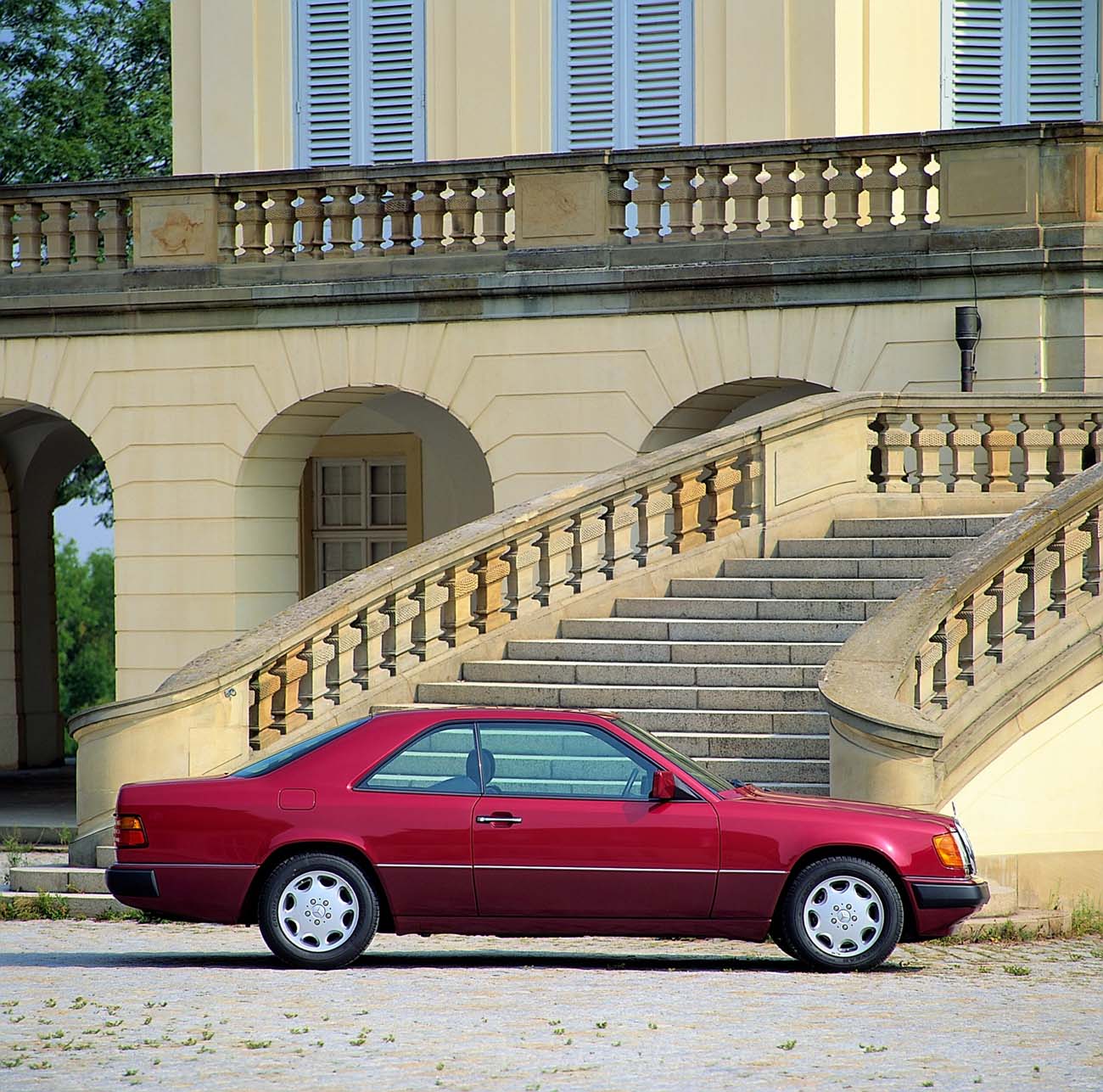
AMG models were added in 1993 and the top model in the E Class Coupe and Convertible range was the E36 AMG. AMG built the engine, taking the capacity to 3.6L and 272 hp. This established a long serving tradition with AMG variants of pretty much everything now. Available from the autumn in 1993 they had been reworked externally with the front air dam, body painted side mouldings and signature 17 inch AMG wheels.
From 1987 to 1996, a total of 141,498 C124 coupes were built and from 1191 to 1997 33,952 A124 cabriolets. Of course, a large amount of these were exported.
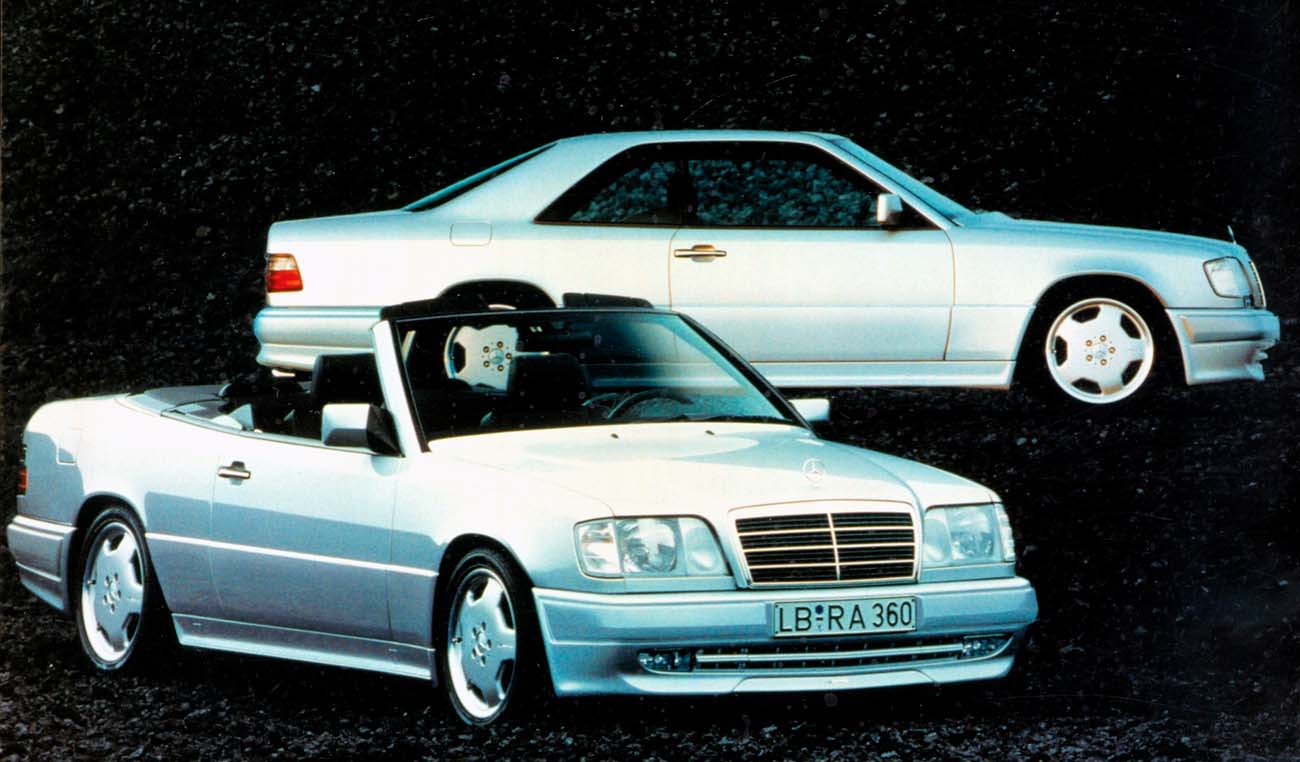
Mercedes Benz CLK C208 - A C Class Stepping Into The Role
Well, Mercedes-Benz didn’t officially have an E Class Coupe or Convertible straight after the W124. It was the turn of the W202 C Class to be the basis for the, still four seat, coupe and convertible.
It makes sense to have used the C Class platform. It could accommodate four, had all the bigger engines in it’s lineup. To produce two very similar models would have seemed ridiculous back then at least.
The new coupe was unveiled at the 1993 Geneva Motor Show to a warm reception. It would take until 1997 before customers could buy one, but only in coupe form. The production car was thankfully close to the concept displayed earlier.
The CLK was displayed at the North American International Auto Show (NAIAS) in Detroit in January 1997. Launch engines ranged from the CLK 200 with 136 hp, to the CLK 430 V8 with 279 hp. The V6 CLK 320 with 218 hp became the most powerful convertible available, which was introduced in 1998.
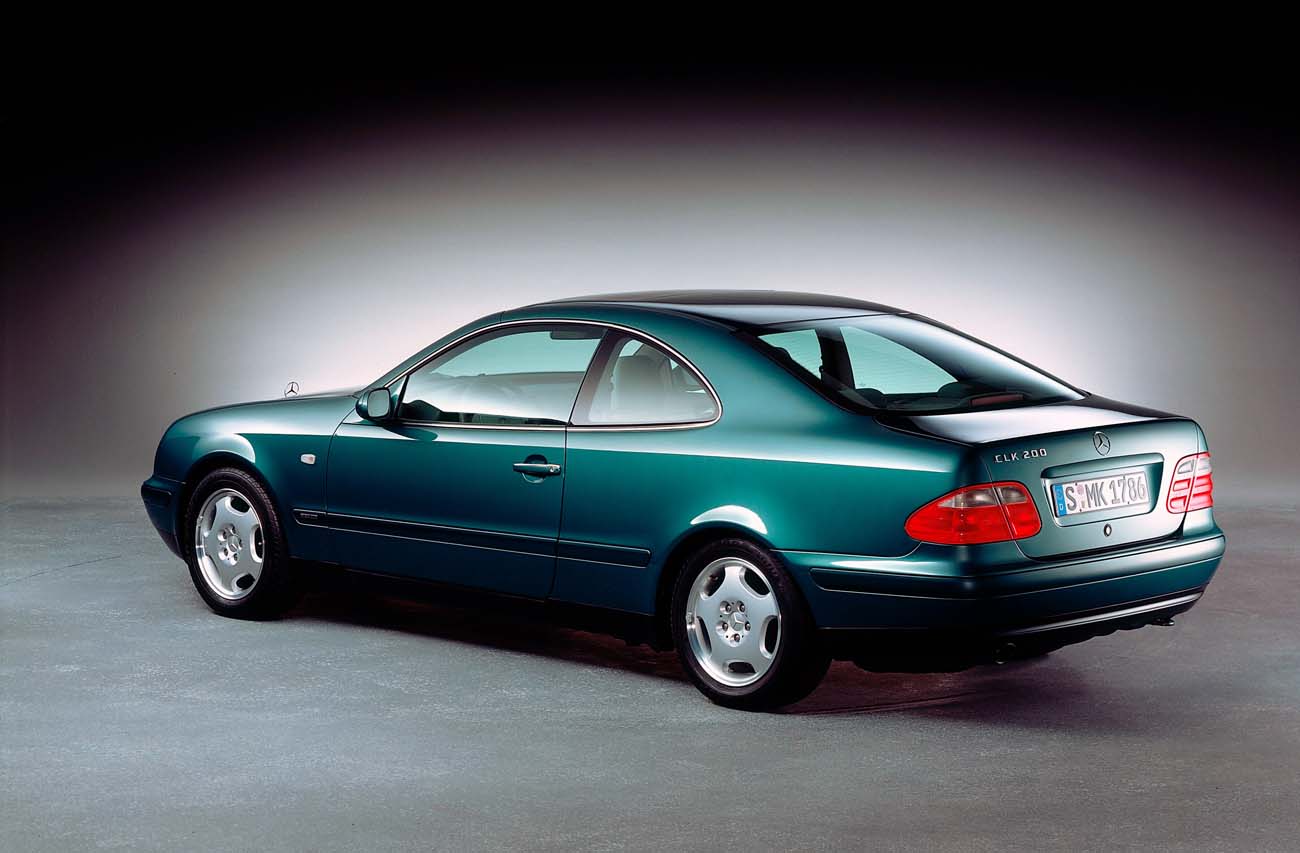
In 1999 the CLK received a facelift with a host of upgrades. Externally there were body mouldings with protective strips painted in the body
colour. Side indicators were now housed in the wing mirrors. Internally there was electrical height fore and aft position of the front seats.
Auto adjusting front seat belts, central display in the instruments and a multi function steering wheel. Under the skin the car got the new SPEEDTRONIC cruise control and an electronic stability program, ESP.
There was a new top of the range model too, the 347hp CLK 55 AMG. This was available in both coupe and convertible.
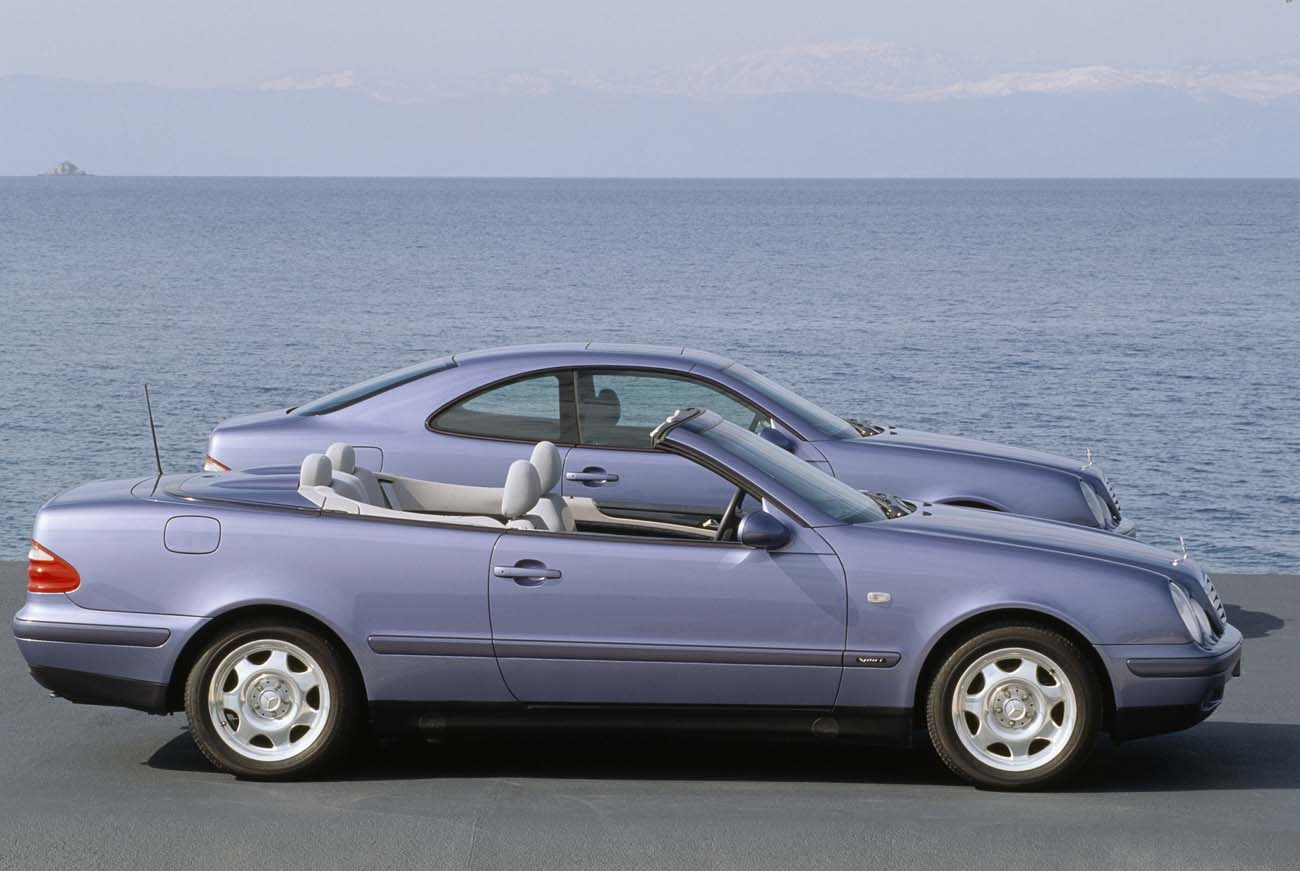
In 1999 the CLK received a facelift with a host of upgrades. Externally there were body mouldings with protective strips painted in the body
colour. Side indicators were now housed in the wing mirrors. Internally there was electrical height fore and aft position of the front seats.
Auto adjusting front seat belts, central display in the instruments and a multi function steering wheel. Under the skin the car got the new SPEEDTRONIC cruise control and an electronic stability program, ESP.
There was a new top of the range model too, the 347hp CLK 55 AMG. This was available in both coupe and convertible.
Between 1997 and 2002, Mercedes-Benz built no less than 233,367 CLK Coupés and between 1998 and 2003 a total of 115,161 CLK Cabriolets.
Mercedes Benz CLK C209
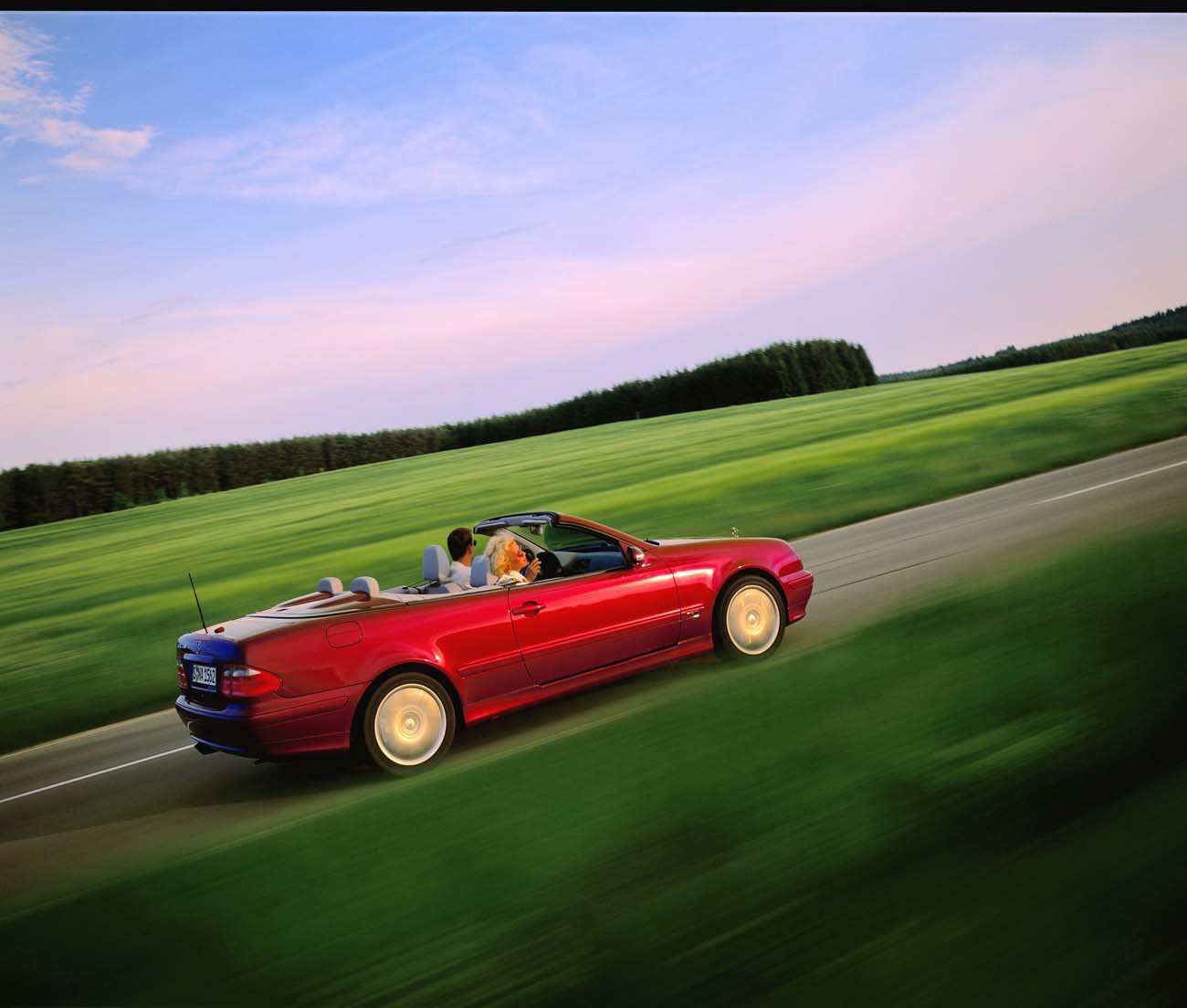
In spring 2002 the C209 CLK coupe replacement was introduced. Whilst sharing a very similar style to the original this wasn’t just another facelift. The following spring the cabriolet with it’s three layer soft top was made available. Some of the most noticeable things were the additional space inside. More seat spacing, headroom, kneeroom and overall width.
There were seven engines available ranging from 163 to 367 hp. The CLK 270 CDI brought back the five-cylinder Diesel engine, now with 170 hp.
Further improvements increased the structural rigidity of the coupe by 40%. The cabriolet was stiffened by 12% over its predecessor. Aerodynamically the coupe drag factor could be as low as 0.28 and cabriolet 0.30.
An important introduction was the C63 AMG. The largest engine option delivered 481 hp in both coupe and cabriolet. The Black Series had as much as 507 hp.
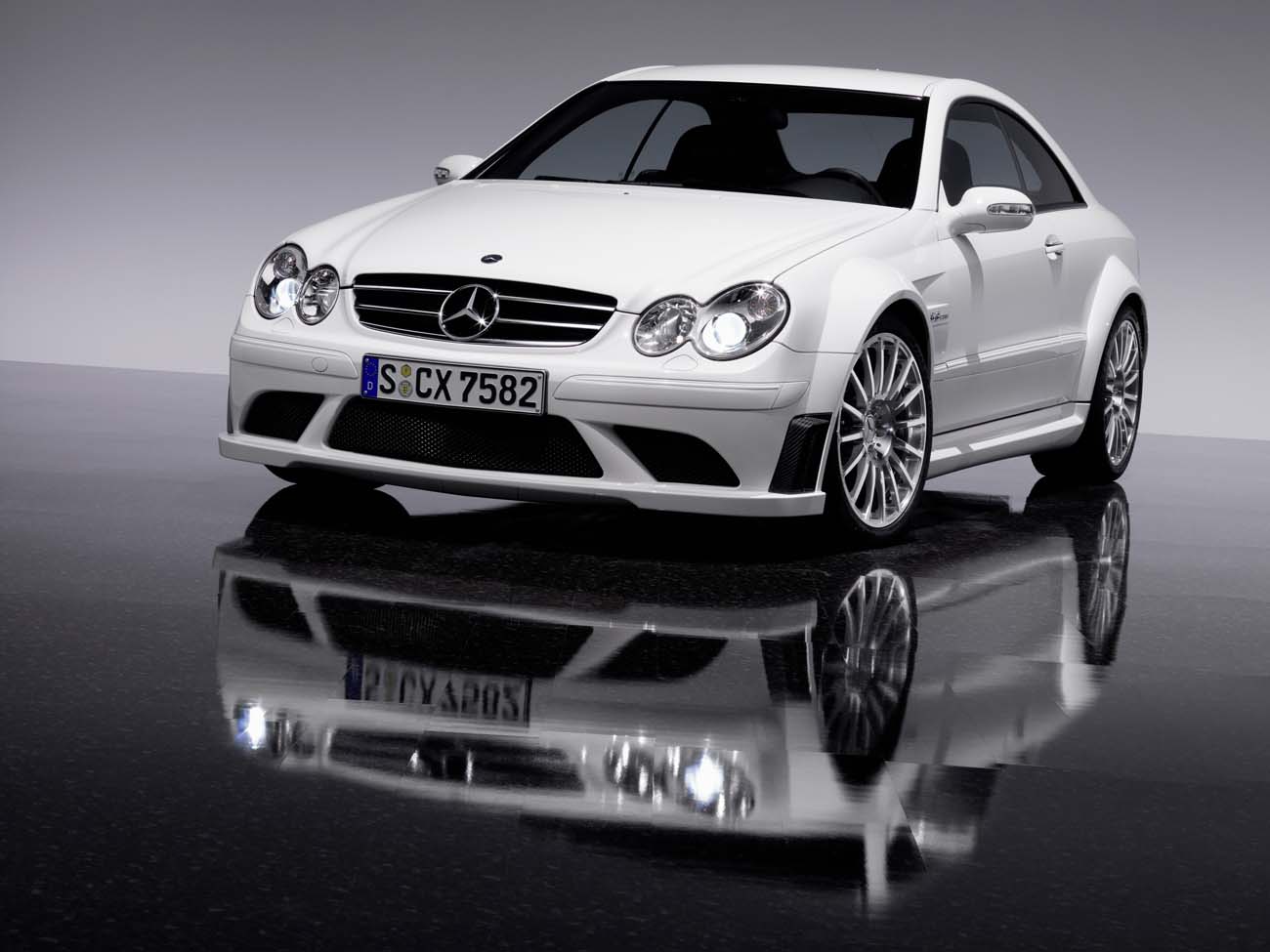
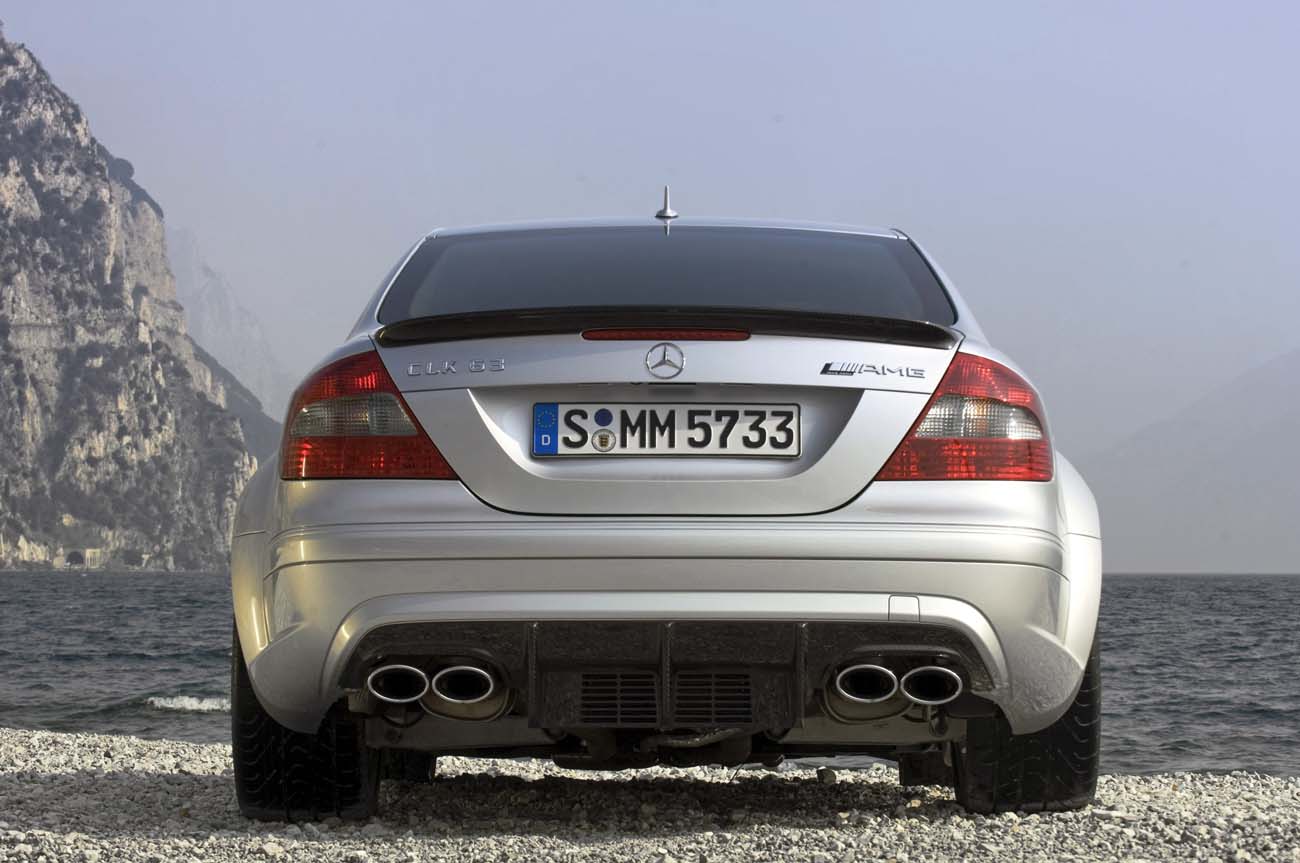
Mercedes-Benz CLK DTM AMG
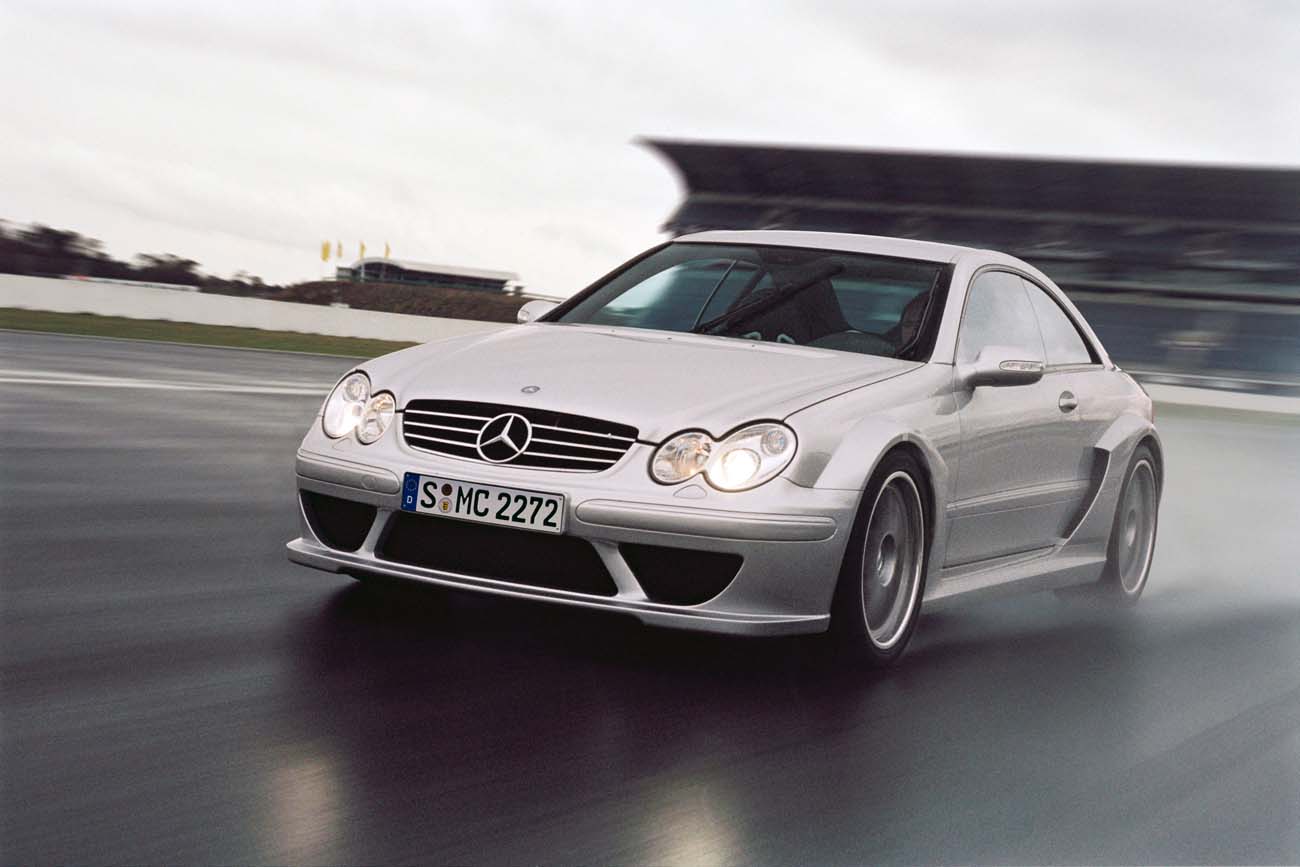
This is certainly something special. Limited to 100 units of each these are incredibly rare and represent the link the German touring car. The AMG 5.5 litre V8 was used delivering 582 hp, the body sharing the DTM race car’s flared arches and wing. Launched in 2004 these are already at classic status.
Built at the end of a very successful era in DTM motorsport for Mercedes. Bernd Schneider was champion in 2000, 2001 and 2003, coming second in 2002.
It’s also possible to have seen the CLK associated with other motorsports. The CLK55 C208 and two versions of the C209, the CLK55 AMG and the CLK63 AMG were used as Formula 1 safety cars. This was spanning the 1997 to 1999 season, 2003 and 2006 to 2007.
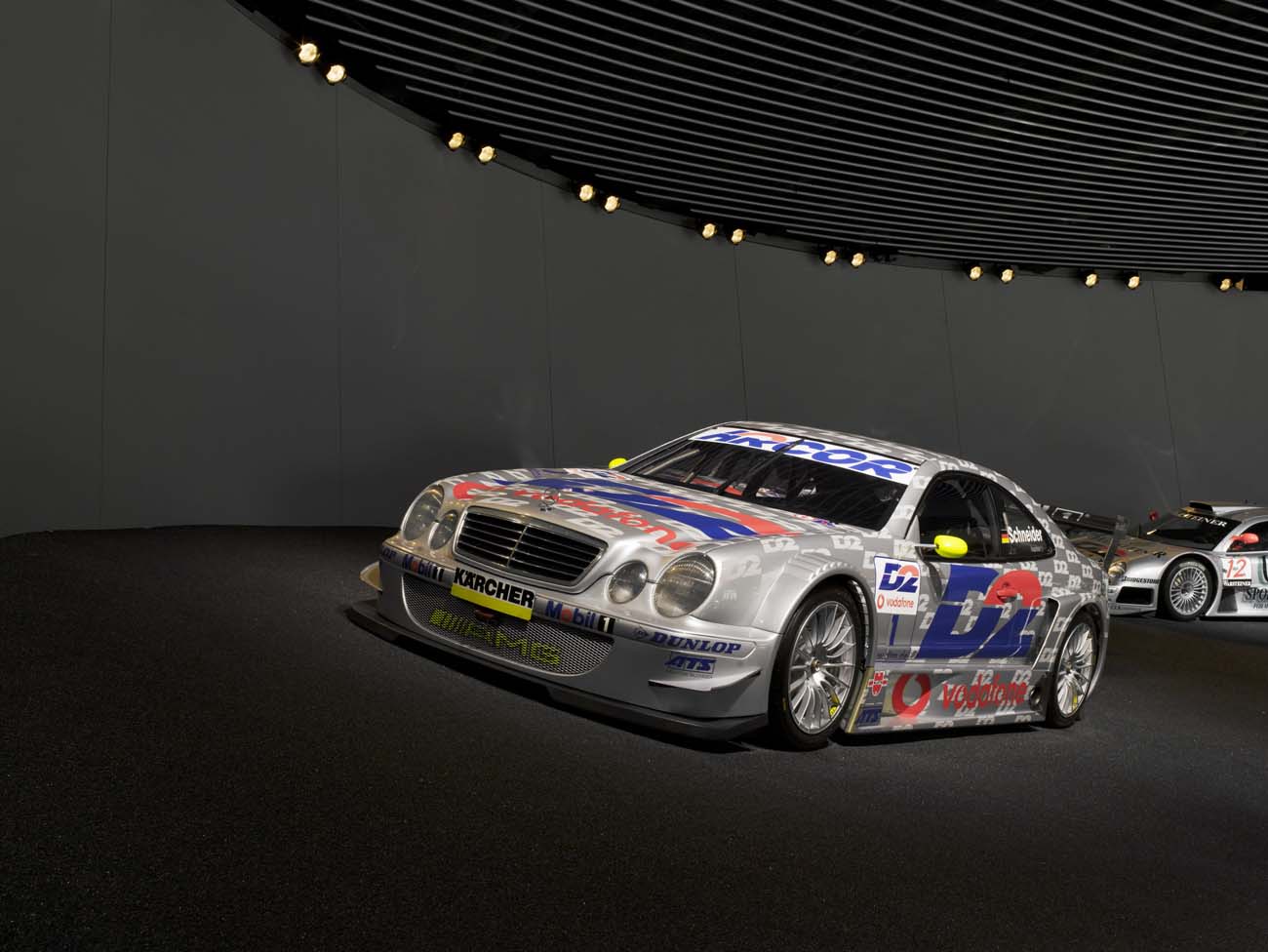
Mercedes-Benz E Class Coupe C207 - Back To The E Class
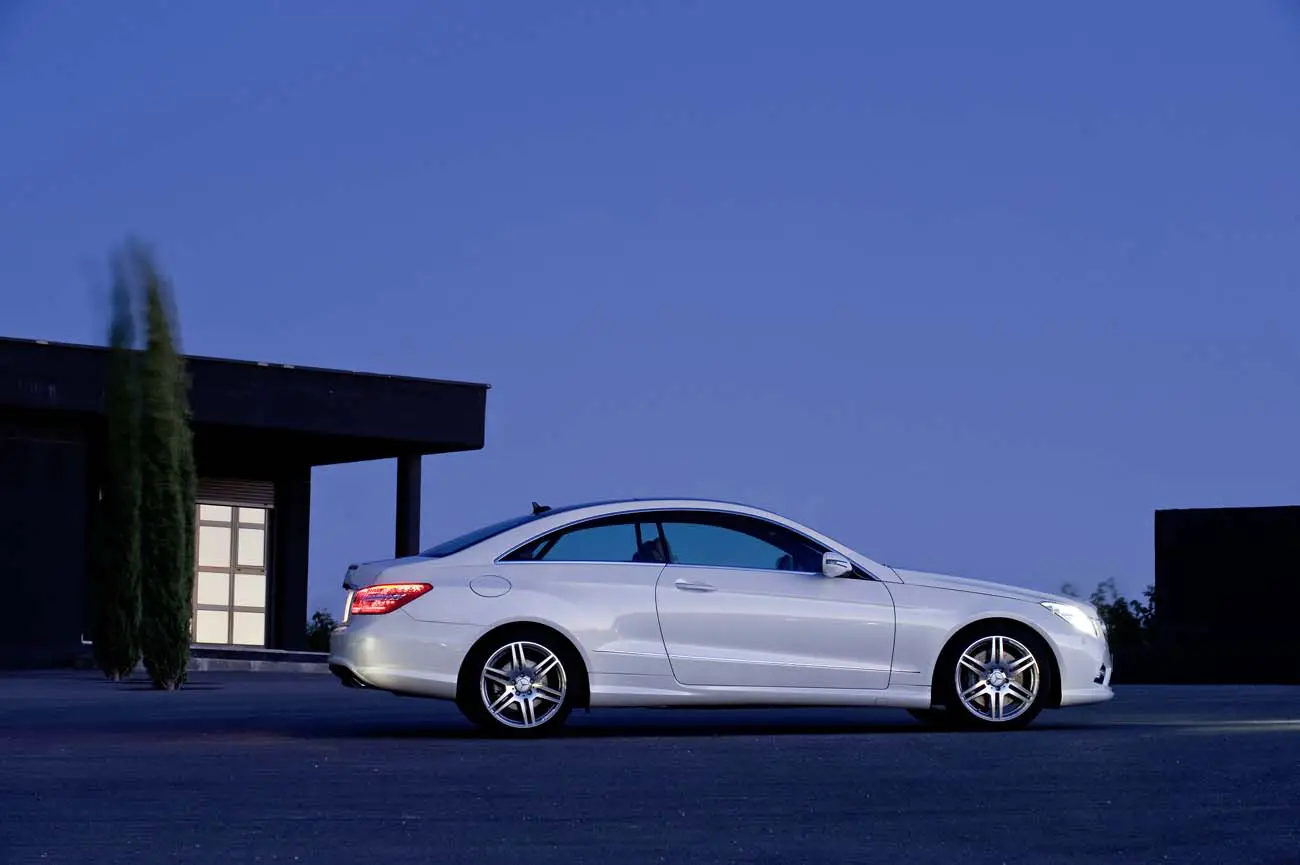
At the Geneva Motor show in March 2009, Mercedes-Benz premiered the new two door E Class marking the official return to the series of coupes. Another pillarless design this is really a modern take on the original.
We really are getting too new now, but will this become a classic like the Stroke/8?
Thanks to Mercedes-Benz for the use of the images.
Don’t forget to head to the Jalopy Facebook Page.
